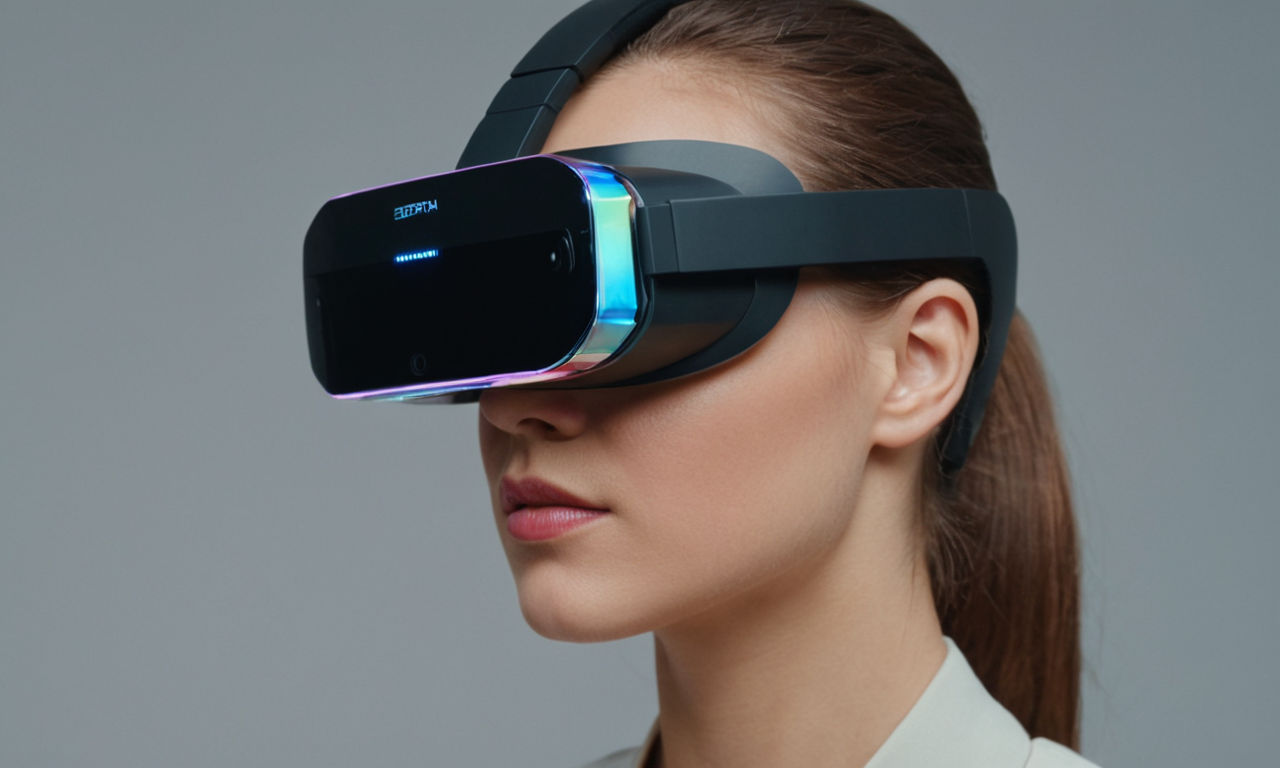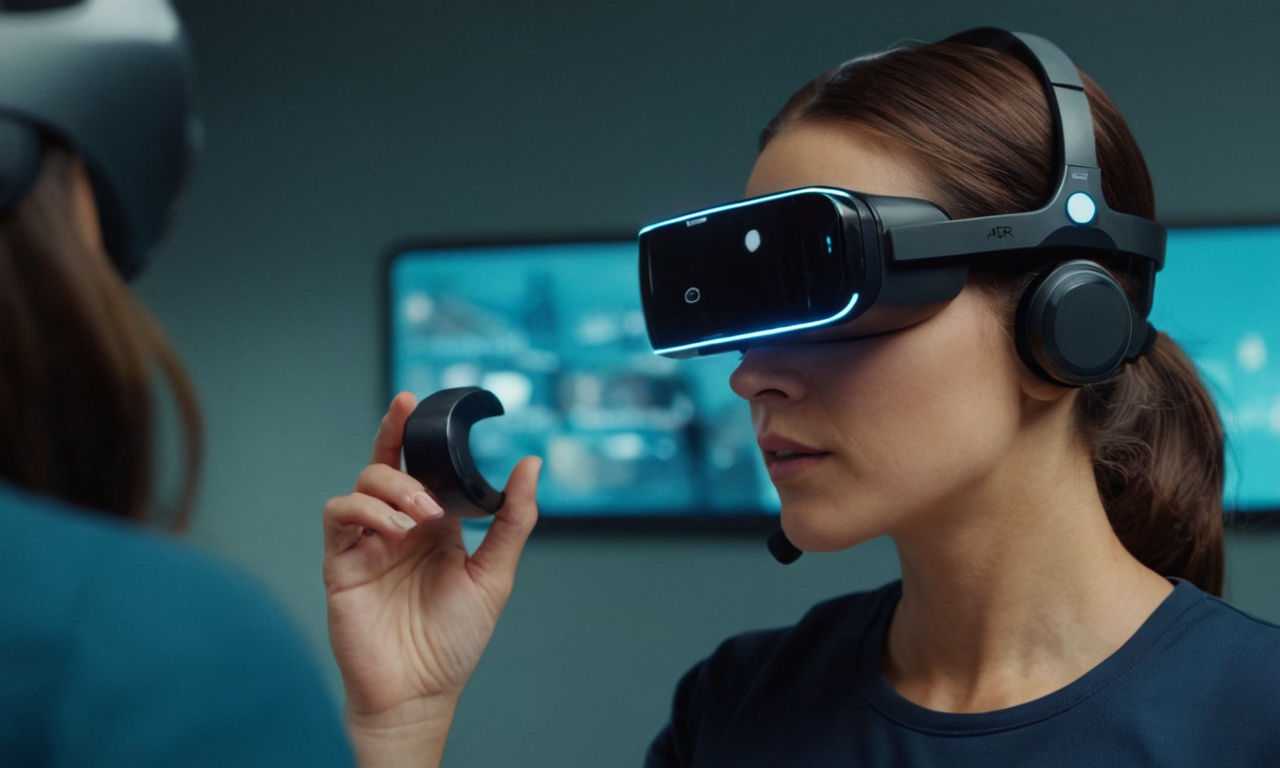Introduction
Microsoft's HoloLens technology revolutionized the world of augmented reality (AR) by blending digital content with the physical environment seamlessly. This article delves into the evolution of this groundbreaking technology, specifically comparing the advancements between the original HoloLens and the newer HoloLens 2. By understanding the enhancements and innovations in HoloLens 2, we can appreciate the significant strides Microsoft has taken in pushing the boundaries of mixed reality experiences.
HoloLens 1: An Overview
The first-generation HoloLens created waves in the tech industry with its pioneering AR capabilities. Boasting a holographic processing unit (HPU) and a see-through display, HoloLens 1 offered users a glimpse into the future of computing. Some key features of HoloLens 1 included:
Spatial sound technology for immersive audio experiences.
Gesture and voice recognition for intuitive interaction.
Limited field of view, restricting the holographic content area.
Bulkier design impacting comfort during extended use.
Despite its groundbreaking technology, HoloLens 1 faced criticism for its restricted field of view, limiting the overall immersive experience. Users also highlighted the device's weight and discomfort as areas that needed improvement to enhance usability.
HoloLens 2 Unveiled
With the debut of HoloLens 2, Microsoft addressed the feedback from its predecessor while introducing groundbreaking upgrades. HoloLens 2 set a new standard in mixed reality technology by incorporating significant improvements such as:
Enhanced field of view, providing users with a broader and more immersive holographic experience.
Lighter and more comfortable design for prolonged usage without discomfort.
Industry-leading hand tracking technology for precise interactions in the digital realm.
Improved eye tracking for more natural and intuitive navigation through holographic content.
HoloLens 2 emphasizes user comfort and usability, making it more accessible for various industries and applications. The advancements in HoloLens 2 showcase Microsoft's commitment to refining mixed reality experiences and pushing the boundaries of AR technology to new heights.
Advancements in Mixed Reality

Microsoft's HoloLens 2 represents a significant evolution in mixed reality technology, surpassing its predecessor in various aspects. The device introduces several improvements that enhance the user experience and push the boundaries of augmented reality capabilities.
Evolution of Mixed Reality Technology in HoloLens 2
HoloLens 2 brings forth a new era of mixed reality by incorporating more advanced sensors, optics, and computing power. The device offers a more immersive experience by blending digital content seamlessly with the physical world. This evolution enables users to interact with holograms in a more natural and intuitive manner.
Improved Holographic Density and Field of View
One of the key advancements in HoloLens 2 is the enhanced holographic density, which results in sharper and more realistic holograms. Additionally, the field of view has been significantly expanded, allowing users to see a larger area of digital content overlaid on their physical surroundings. This improvement eliminates the restricted "window" effect present in the first-generation HoloLens.
Enhanced Tracking and Interaction Capabilities
HoloLens 2 boasts improved hand tracking and gesture recognition, enabling users to interact with holograms using natural hand movements. The device also features eye-tracking technology, enhancing the overall user experience by making interactions more intuitive and responsive. These advancements in tracking and interaction capabilities make HoloLens 2 a more versatile tool for various applications, ranging from gaming to professional use cases.
Features Comparison
When comparing HoloLens 1 and HoloLens 2, it becomes evident that the second-generation device brings significant upgrades in both hardware and software aspects, enhancing the overall mixed reality experience.
Detailed Comparison of HoloLens 1 and HoloLens 2 Features
HoloLens 2 features a more ergonomic design, making it more comfortable to wear for extended periods. The device is also lighter and better balanced, reducing strain on the user's neck during prolonged use. Additionally, HoloLens 2 comes with an improved display that offers higher resolution and better color accuracy, further enhancing the visual quality of holograms.

Differences in Hardware Specifications
In terms of hardware, HoloLens 2 is equipped with a more powerful processor and custom-built AI holographic processing unit (HPU). These upgrades enable faster and more efficient hologram rendering, leading to a smoother and more realistic mixed reality experience. Moreover, HoloLens 2 features a wider field of view and better spatial mapping capabilities compared to its predecessor.
Software Enhancements in HoloLens 2
HoloLens 2 introduces a range of software enhancements, including updated Windows Mixed Reality platform and improved gesture recognition algorithms. The device also supports more advanced spatial mapping and occlusion capabilities, allowing holograms to interact more seamlessly with real-world objects. These software improvements contribute to a more immersive and interactive mixed reality experience for users.
Usability Upgrades
HoloLens 2 not only excels in technological advancements but also brings notable upgrades in terms of usability, comfort, and overall user-friendliness.
Enhancements in Comfort and Fit
The second-generation HoloLens features a more comfortable and adjustable headband design, reducing pressure points and ensuring a better fit for a wider range of users. The device's new flip-up visor makes it easier to switch between the mixed reality and real-world views, adding convenience for users in various scenarios.
User-Friendly Design Changes in HoloLens 2
HoloLens 2 incorporates user feedback from the first-generation device to streamline the user interface and improve overall usability. The device's new gesture controls and voice commands are more intuitive and responsive, making interactions with holograms more natural and efficient. These design changes enhance the user experience and reduce the learning curve for new HoloLens users.
Improved Battery Life and Performance

In addition to hardware and software upgrades, HoloLens 2 offers improved battery life, allowing users to engage in mixed reality experiences for longer periods without frequent recharging. The device's enhanced performance, coupled with efficient power management, ensures a smooth and uninterrupted user experience, whether for gaming, productivity, or creative applications.
By incorporating advancements in mixed reality technology, detailed feature comparisons, and usability upgrades, HoloLens 2 sets a new standard for augmented reality devices, offering a compelling and immersive mixed reality experience for users across various industries and applications.
Pushing Boundaries of AR Experiences
Microsoft's HoloLens 2 transcends the boundaries of augmented reality by offering a wide array of use cases and applications that cater to diverse industries. Let's delve into some key areas where the HoloLens 2 has made a significant impact:
Innovation in Healthcare: HoloLens 2 has revolutionized medical training and patient care by enabling detailed 3D visualization of anatomy. Surgeons can now overlay patient data in real time during procedures, leading to enhanced precision and better outcomes.
Enhanced Training Simulations: The HoloLens 2 has redefined training scenarios by providing interactive and immersive experiences. For example, aviation industry professionals can practice complex maneuvers in a simulated environment, bolstering their skills in a safe and controlled setting.
Remote Collaboration: With the HoloLens 2, remote collaboration has been taken to new heights. Teams spread across the globe can now interact in a shared augmented space, working on projects collaboratively as if they were in the same room.
These real-world examples showcase how HoloLens 2 is not just a gadget but a transformative tool that enhances productivity, efficiency, and innovation across various sectors.
HoloLens Technology Review
The technological advancements in HoloLens 2 have set a new standard in the realm of mixed reality. Here's an overview of the key upgrades that differentiate it from its predecessor:
Increased Field of View: One of the most significant improvements in HoloLens 2 is its expanded field of view, which provides users with a more immersive and realistic AR experience. This enhancement eliminates the limitations of the previous model and allows for a more natural interaction with holograms.
Intelligent Hand Tracking: HoloLens 2 introduces advanced hand tracking capabilities, enabling users to interact with holograms using natural gestures. This intuitive feature enhances user experience, making interactions more seamless and intuitive.
Integration of AI and Machine Learning: By integrating artificial intelligence and machine learning, HoloLens 2 can provide smarter and more personalized experiences. From voice commands to spatial mapping, these technologies work together to elevate the overall usability of the device.
These technological advancements not only enhance the functionality of HoloLens 2 but also pave the way for future innovations in the augmented reality space.
Conclusion
In conclusion, the advancements and improvements in Microsoft's HoloLens 2 demonstrate a significant leap forward in the world of mixed reality. From its diverse applications across industries to the cutting-edge technological features it offers, HoloLens 2 has truly redefined the way we interact with augmented reality.
As readers, it is encouraged to explore the capabilities of HoloLens 2 further to grasp the full extent of its potential. The possibilities are endless, and the impact of this groundbreaking device is poised to reshape the future of AR experiences.



